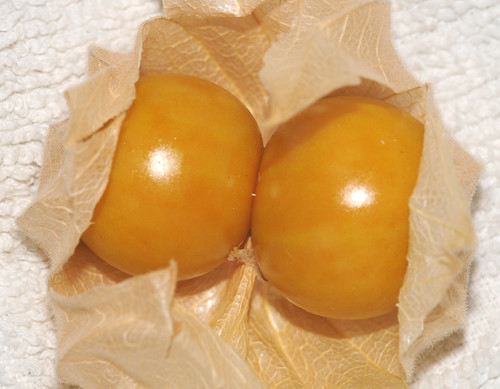Big lunch with the family at Easter and, as usual, I got to cook dessert. One day I will have to volunteer to cook something else!
My dad is quite partial to a bit of chocolate cake and I’ve had my eye on this sour cream chocolate cake for ages. I have plenty of chocolate cake recipes that are tried, tested and, indeed, popular, but there’s no harm in trying something new. And in the past I’ve found Dan Lepard’s recipes very reliable (see his tollhouse yoyos).
I received instructions from dad to make sure I used chilli chocolate. I ignored this and just followed the recipe.
The cake itself has a degree of novelty as it uses oil and sour cream rather than butter. And the icing is also based around sour cream. The cake also has less chocolate than I expected in the cake itself and, I thought, there was far too much vanilla in the whole thing.
Begin by making the cake. Prepare 2 18cm (or in my case I think they were 19cm) sponge tins: I used new silicon ones so I just gave them a slick of canola oil and base lined them with baking paper. Preheat the oven to 180°C (160°C fan).
Melt 75g dark chocolate. Beat together 75mL of sunflower oil, 75g of sour cream (I actually used light sour cream because if you shop at 4pm on Maundy Thursday you use what is on the shelf!), 125g caster sugar, 75g of runny honey, 2 tsp vanilla extract, and 3 eggs. Then add the slightly cooled melted chocolate.
Mix together 175g plain flour, 25g of chocolate and 2 tsp of baking powder and sift it into your cake mix.
Divide the mix between the two pans and bake until done – which in my case was just on 20 minutes. Lepard’s original recipe suggests 25 minutes but I knew my pans were potentially slightly larger than they should have been and I also know my oven is quick. You want the cake to be done but you also want a few crumbs sticking to the skewer.
Remove the cakes from the oven, stab all over with a skewer and dress with a simple syrup of 25g sifted icing sugar adn 25 mL boiling water. The original recipe suggests adding 2 tsp of vanilla extract, which I did, but the finished product was so overhelmingly vanilla-y that I’d definitely omit that at this step.
Cover the cakes (I used cling film) and allow to cool. In my case, this was overnight.
When ready to assemble I made the sour cream icing. Take 300g of dark chocolate and melt with 50g of unsalted butter. Add 50g of runny honey, a splash of rum (Bundaberg, of course!), 100g of sifted icing sugar and 125 g of the light sour cream. Mix until smooth.
Despite sieving the icing sugar, mixing until smooth involved putting it all in the KitchenAid and giving it a good beating with the paddle beater. It made quite a pale fluffy icing.
Sandwich the cakes together (pro tip – sandwich together the two flat sides – the bases) with the icing and cover the top and sides.
Serve at room temperature with plenty of cream.
The verdict?
Personally, I was massively underwhelmed by this. There was waaaay too much vanilla – I’d definitely drop the vanilla from the syrup, and probably also halve it in the cake (although I suspect the vanilla in the syrup was the main offender, not being cooked out). I’d probably also go for a straight chocolate ganache: I found the icing too sweet and would have to rework it to reuse it.
I was ho-hum about the cake. I’d prefer something darker and more chocolately and fudgy.
Andy liked the total package and loyally said he’d be happy to eat it all day.
Mum rated the cake highly but wasn’t sure about the icing. In fact, the icing seemed the most contentious part of the cake.
Dad? Well, he complained because I didn’t use chilli chocolate!




